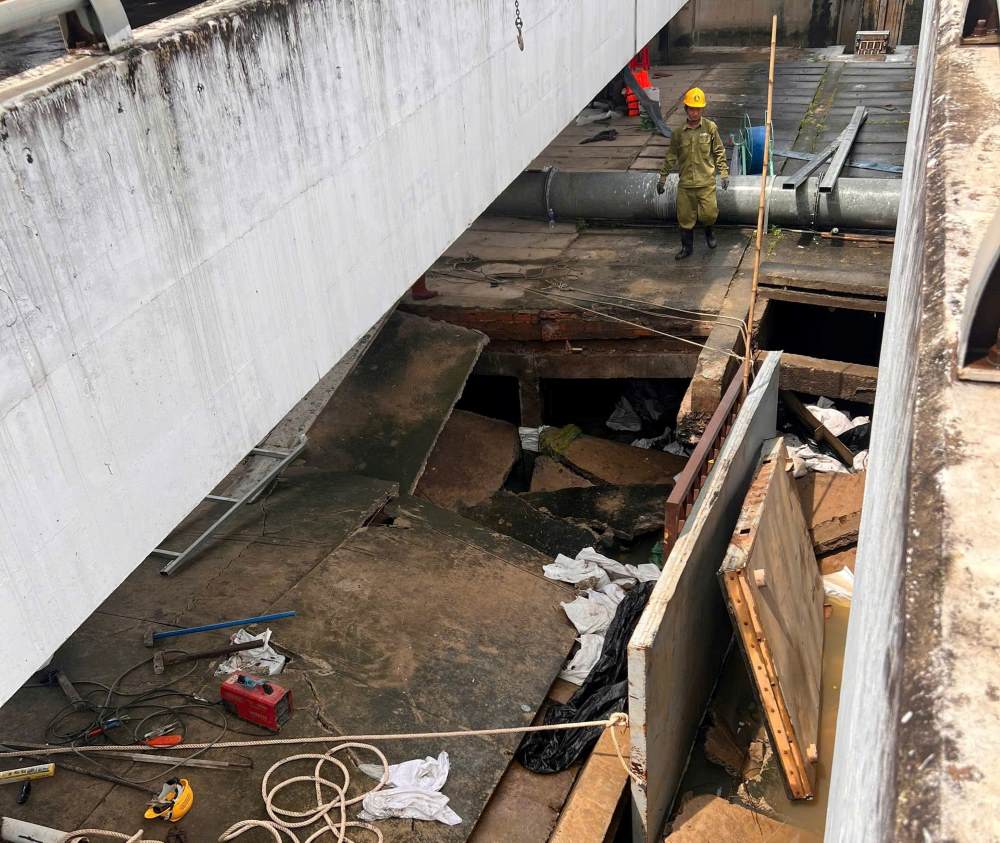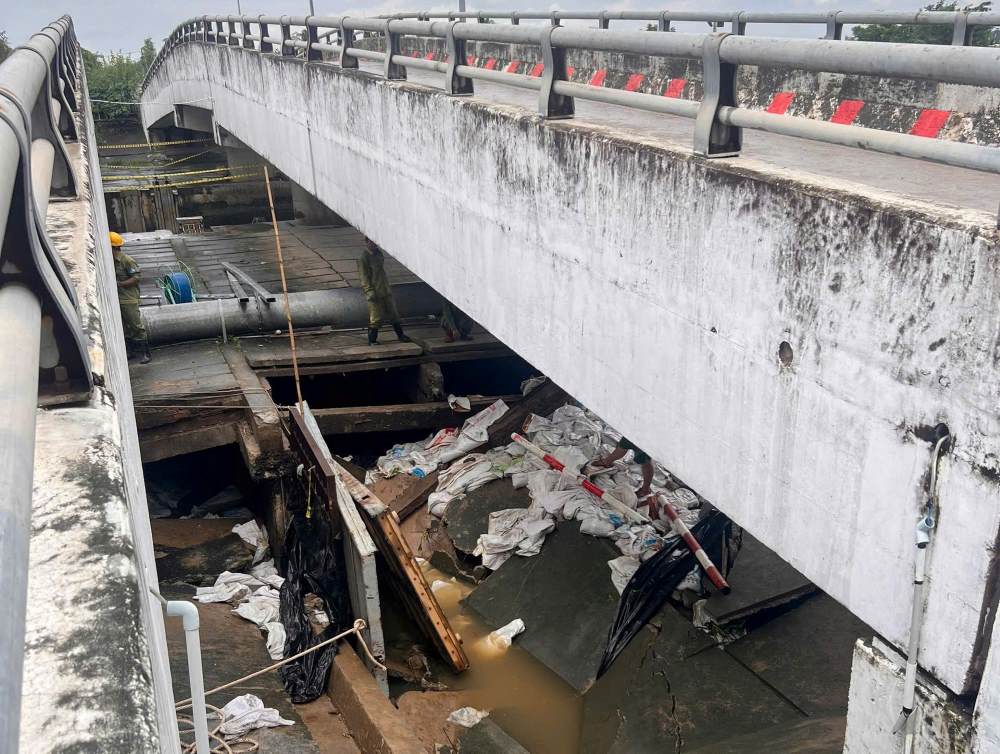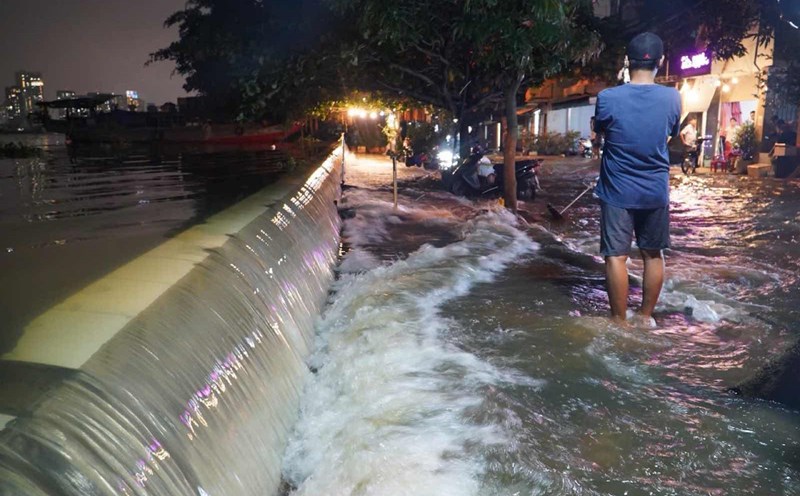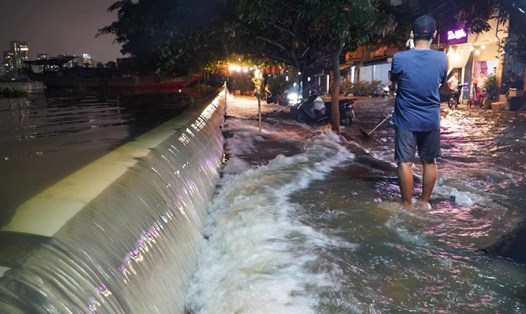Regarding the incident of the broken tide-prevention culvert under Ba Thon bridge (formerly An Phu Dong ward, District 12) causing the Saigon River to overflow into the residential area on the evening of November 6, the leader of An Phu Dong Ward People's Committee said that immediately after discovering the broken tide-prevention culvert, local forces quickly arrived to handle it.

"Concrete panels were released into the damaged area to block the water flow back, while mobilizing large-capacity pumps to pump out the drainage. By the evening of the same day, the broken area had been temporarily reinforced, and water no longer overflowed into people's houses," the ward representative shared.
The local government said that this measure helps ensure immediate safety for residential areas while waiting for specialized units to conduct surveys, assessments and long-term solutions. The ward also said that the incident did not cause significant damage, and no households had to evacuate. The water level only rose locally for a short time and was controlled. Forces remained on duty to monitor the tidal level during the night, ensuring that no new situations arose.

Previously, as reported by Lao Dong Newspaper, on the evening of November 6, the area under the box culvert of Ba Thon Bridge connecting Thanh Loc 43 Street with the right bank of Saigon River (near Giao Khau Temple, Ho Chi Minh City) suddenly had a large stream of water from the river overflowing due to the culvert being broken up for a section.
The incident occurred right at the time when Ho Chi Minh City was experiencing the highest high tide of the year, causing river water to quickly overflow into surrounding residential areas. When discovered, people reported it to the local authorities. Functional forces, military units, irrigation management and dyke management were urgently present to coordinate the repair.
At the scene, pumps were operated continuously to lower the water level, and dozens of concrete panels were released to the subsidence site to prevent the flow. By around 7pm, the situation was basically controlled, and the river water was no longer overflowing into the residential area. Relevant units continue to monitor and inspect the safety of the tidal culvert system to avoid the risk of recurring incidents during the days when the tide is still high.











